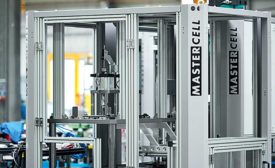Home » Keywords: » assembly cells
Items Tagged with 'assembly cells'
ARTICLES
Automated Assembly Systems
The concept is intended to make automated assembly lines more flexible and faster and less expensive to implement.
Read More
Flexible Automation Boosts Battery Production
Standardized, software-driven assembly cells enable start-up to manufacture batteries domestically.
April 6, 2023
Success With Workstations
New workstations have helped manufacturers in various industries improve productivity and ergonomics
May 11, 2020
Lean Layout Do’s and Don’ts
Flexibility and flow are critical to efficient assembly line design
May 2, 2019
Automated Assembly Cells
Standardized, preconfigured automated assembly cells can lower costs and reduce time to market.
March 1, 2017
Producing in Synch With Sales
Manufacturers have two opposite ways of equipping factories to respond quickly to customer demand.
August 5, 2014
Never miss the latest news and trends driving the manufacturing industry
Stay in the know on the latest assembly trends.
JOIN TODAY!Copyright ©2025. All Rights Reserved BNP Media.
Design, CMS, Hosting & Web Development :: ePublishing








